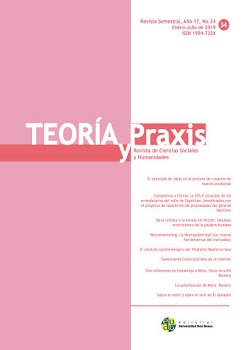From chronicle to novel without fiction: fabulous daring of the human word
DOI:
https://doi.org/10.5377/typ.v1i34.14815Keywords:
Chronicle, non-fiction novel, chronicle boom, new journalism, modernist poetry, journalistic discourseAbstract
This text, in close travel, tries to envision that the chronicle does nothing, but tell stories and the stories of both humans and gods is what survives, what remains in the memory, be it as journalistic work or mythology. Much has been talked about the possible whys. According to Tomás Eloy Martínez, the data amazes us, but does not move us. There’s the secret, the difference between the number that gives the size of the fact and the word that tells it. There is also the reason why it is said that there has been a second boom in Latin America, because the chronicle born with the modernist poets at the end of the 19th century, and arrives in 1937 in L’Éspoir, the first non-fiction novel, and continues to flow with renewed creator force in all our countries ambits
Downloads
References
García Márquez, Gabriel: Notas de prensa. Obra periodística 5 (1961-1984). “Algo más sobre literatura y realidad”. Editorial Diana S.A., México 2003. p. 155.
Ricoeur, Paul: La Mémoire, l’Histoire, l’Oubli (L’ordre philosophique) Editions du Seuil, Paris (15 janvier 2003).
Rotker, Susana. La invención de la crónica. Fondo de Cultura Económica, México, 2005. pp. 16 y 230
Wolfe, Tom: The new journalism. Picador, Pan Book Ltd. Londres, 1975, El nuevo periodismo: Editorial Anagrama, Barcelona, España., 1976.
Downloads
Published
How to Cite
Issue
Section
License

This work is licensed under a Creative Commons Attribution-NonCommercial-NoDerivatives 4.0 International License.




